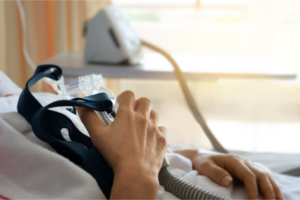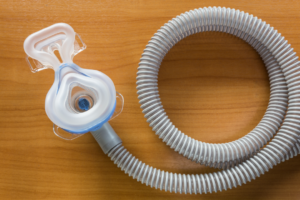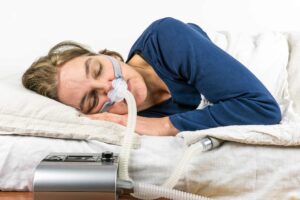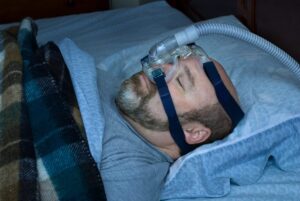best cpap mask

The Setup and Use of CPAP Masks
So many people, especially in America, have undergone sleep therapy and have been diagnosed with obstructive sleep apnea, affecting many people. Because when sleep is not accurate, it affects the body’s function and efficiency. Sleep Apnea is a severe breathing disorder that happens during the sleeping period. This disorder occurs when the airway passage is blocked and breathing is no longer comfortable, so medical practitioners, especially the sleep therapist, introduced face masks. The invention of the CPAP machine has greatly relieved many people living with sleep apnea. This sleep apnea mask or device gives a steady flow of air via the hose to the nose to stabilize breathing while sleeping. CPAP machines and CAPA mask brands have significantly helped many people with obstructive sleep to be able to breathe comfortably while they sleep. Face, nasal, and other mask types have improved the quality of rest time. Getting the maximum function of the CPAP machines requires following step-by-step guides on how to use them, especially following the directions and prescriptions by your sleep therapist. Let’s talk about setting up the CPAP mask categories to maximize the device’s working. Six ways to Set up of CPAP Mask CPAP filters Knowing your CPAP mask’s filter is essential and wise because this will help you set up the face masks. There are different types of filters, and their setup methods differ. They are The bacteria filter can be attached to or fixed to the nasal mask hose connecting to the air vent and the other end. But if you use a humidifier, the bacteria filter will be connected to the air outtake, not to the CPAP mask machine. Also, you will need to place the bacteria filter between your hose and the face mask if you use a heated tube. The other filters have a similar placement method; the disposable filter is fixed into the face mask machine, while the foam filter is set outside the machine. Hose and CPAP Masks connection. The report of your sleep therapy will determine your treatment and the kind of CPAP mask your therapist will recommend for you. But whichever humidifier or CPAP mask machine you use, the hose will be connected to the air outtake. Most hoses have a diameter of 22mm, making it easier and simpler to connect to the mask. Also, this dimension of hoses can easily fit into all CPAP masks. Ways of wearing CPAP Mask. Some things must be first considered before choosing your face CPAP masks, glasses, nasal masks, nasal pillows, nasal pillow masks, and even nasal cradle cushions. The two things are your sleep position, shape, and head size. These two things will help you to choose the best CPAP mask and the right CPAP mask. Getting used b to wearing glasses may not be easy, but gradually and gently, you will understand the logic. When you lay on the bed, just put the CPAP mask on the face along with the strap and gently pull the strap to equally cover the face entirely till you can breathe comfortably and ensure that there is no air leakage. It must not be too tight on you to avoid pain. Also, you can aid your sleeping position using CPAP mask pillows. More so, before placing the face mask on the face, you must ensure that the face is washed and free of oil because this will proffer a seal between the face and the CPAP mask. Setting up a Humidifier. Using a humidifier is based on if your sleep specialist recommends it. The work of a humidifier is basically to help the CPAP mask with moisture so that you can be free from a dry nose and mouth. First, you can easily set up your humidifier by putting distilled water in the water chamber. The water must be clean because of your health. Tap water is hazardous to the humidifier because it retains some chalky deposits, which may be very difficult to clean. The air pressure from the humidifier gives you refreshment after sleep. Methods to Clean the CPAP Machine To keep the CPAP machine functioning regularly, the user must always clean it after use. Meanwhile, the best way not to pass infections and bacteria to the body is for the CPAP mask must be cleaned and neat because it supplies air pressure to the nose and mouth. We will briefly talk about a few methods how for cleaning the CPAP masks The machine has a way of keeping dust inside; if there is no cleaning, the CPAP machine becomes risky to the user’s health. Switching on the CPAP Mask This part is the simplest of everything. Whether through the manual or your sleep therapist, putting on the machine is very easy. But there are a few methods to guide you to do that. The mask must be put beside or near your bed on a flat surface. After placing the CPAP mask on your face, you can switch on the CPAP mask machine. You can also adjust the velocity of the air pressure by clicking on the ramp feature. When you change the speed of the force of the air, it hastens your sleep. Conclusion We are sure this article will offer a helpful guide on handling and taking care of sleep apnea masks. Using the machine is not as good as keeping it clean and from infection. Every CPAP user must learn how to use the device effectively. All the CPAP mask categories, like, face masks, nasal pillows, glasses, and all mask types, must be neat. Related:
Read More
The Causes of Obstructive Sleep Apnea and the Use of CPAP Masks
Sleep apnea is a sleeping disorder that creates a breathing fluctuation while sleeping. CPAP masks are machines that help CPAP users to sleep comfortably. Several kinds of sleep apnea masks have assisted people in having a night of quality sleep. CPAP mask categories have different components that can rectify the OSA. The best CPAP mask has been an outstanding solution to any OSA out of other solutions. However, some people who snore heavily are not enjoying sleep such needs therapy and treatment. Some of the symptoms of sleep apnea are sleeping during the daytime and snoring. You can’t have quality time sleeping when you experience a disruption in breathing. This sleep apnea experience can cause colossal health damage when it is not given attention and quality treatment. You must visit any sleep therapist or specialist to diagnose the kind of OSA you have and know the treatment approach to adopt. In this article, you will be opened to the causes of OSA, the mask types, and the best CPAP mask that will give you the comfort you desire and also need to see CPAP therapy. Causes of Obstructive Sleep Apnea So many factors are responsible for a sleep disorder; in this section, we’ll consider some factors and how to tackle them with a CPAP mask. Gender Most of the time, men are more likely to have OSA. Gender also affects who can easily have sleep issues due to some sex hormones. Though women also have OS only after menopause Diabetes People with diabetes can easily have OSA. Diabetes can also affect the rate of how breathing which can cause sleeplessness Smoking Smoking is so detrimental to health that it can also cause OSA. Smoking can also affect the throat; when the throat is concerned, the airway may not be open, which can affect Nasal congestion Nasal congestion creates a narrow airway due to consistent congestion in the nostrils. It will affect breathing capacity and can even result in headaches, body pain, and sleeplessness. Obesity Though not all who are overweight have a sleep disorder, most of them experience sleeping disorders because too much fat in the body can block air passage. Also, there are conditions such as Obesity which is polycystic, and hypothyroidism can cause sleep disorders. Age Some ages are very close to having OSA because of some hormones in the body, but at the 60s upward, the chances of having sleep disorder decrease. Glaucoma This eye problem also can cause sleep disorders due to the connection of the eyes to the head. There are many complications, but CPAP masks can solve this problem. Hormone disorder Some hormone conditions can also cause or increase the chances of having OSA. Some of the growth tissue can as well block the airway, which can later develop into a sleep disorder Sleeping position Some sleeping positions are very risky to the health, especially the back sleeper; such sleeping style may affect the airway and eventually affect d breathing. These factors and many more are potential agents that can cause OSA. Meanwhile, all the elements can be treated and avoided with the help of CPAP therapy and a sleep specialist. Finally, I will briefly discuss CPAP masks and other accessories and how they can be administered to anyone with a sleep disorder. CPAP Masks and their Uses. This CPAP mask is a carrier for air pressure to the airway to assist the person with sleep Apnea to breathe comfortably while sleeping on the bed. There are different sizes and styles of CPAP masks, and the materials used in making the masks are also different. Out of the CPAP masks outside, only three are shared, widely accepted, and recommended by the sleep therapist. They are These CPAP masks are differently molded and work differently but have the same result.CPAP machines are the most recommended and effective treatment for sleep disorders. In addition, some other important CPAP mask components are essential to treating obstructed sleep. All these are very important, and they give comfort to anyone who is battling with OSA. However, using a CPAP mask depends on how your therapist explains it. Applying the CPAP mask is straightforward but must be according to the explanation of your therapy. There are steps to follow when using the CPAP mask. First, whichever of the masks you prescribe, you must ask your therapist how to install and use it. Next, let’s discuss some of the methods for using CPAP masks. First and foremost, you must find an excellent place to keep your CPAP machines. When your machine is safe, every other component, like the hose and the mask, will function well. The device must be closer to your bed for easy plugging at night. The filter is also necessary to always check and follow the instruction given to you by your sleep therapist. The filter can be changed anytime, but there is a method of removing and fixing it. Connecting the hose to the CPAP is easy as long as you can read the manual that comes with the CPAP machine, and more so, you can adhere to how your doctor informed you. In addition, the connectivity between the hose to the mask is also easy. The hose is connected to the CPAP mask, leaving no space for air to escape. Your sleep doctor determines the mask you will be putting on—based on your breathing, your sleeping position, and your type of OSA. Some face masks cover the entire face, some only cover the nose, while others cover the nose and mouth. Wearing the mask is accessible as much as you have the right face mask. You will also need straps to help tighten the mask around your head, which must comfortably fit in. The fixing of the strap must not be painful to breathe comfortably. Conclusion Many things are potential agents that cause obstructive sleeping. But the OS can be corrected with sleep therapy, CPAP masks, and other components. When this sickness is not treated right, it damages health.
Read More
CPAP masks: Breathing-related problems
Continuous positive airway pressure is the best treatment for obstructive sleep apnea (CPAP). Pressured air from the CPAP machine is delivered by a hose to a mask, which the patient wears to push up their airway physically. This allows oxygen to enter their lungs. A mouth breather is someone who generally inhales and exhales via their mouth as opposed to their nose. While the patient is sleeping with their lips open, the air from best cpap masks entering their nose will exit out of their mouth. This problem causes the CPAP masks pressure to enter the airway to be lower than what is required to keep the airway open, which reduces the treatment’s efficacy. A heated humidifier The first line of treatment for mouth breathing and dry mouth for sleep doctors is often the use of warm humidification. It is easy to put specifically designed humidifiers like this one into a CPAP machine. Humidification research has a lengthy history. In a 1995 study, Hayes found that utilizing nasal CPAP while having your mouth open causes nasal mucosal blood flow to rise, which causes congestion. Hayes found that adding moisture to the air that enters the nasal CPAP may be able to reduce the increased mucosal blood flow. Heated humidification reduces the negative effects of upper airway symptoms and makes patients feel more rested when they awaken after wearing CPAP masks with heated humidification, according to a 1999 Massie study. Massie indicated that compliance gains could be attained sooner if patients start warm humidification right away with CPAP. In a 2000 research, Araujo found that heated humidification significantly lowers air dryness even during mouth leaks, while full-face masks totally remove it during CPAP. Complete-face CPAP masks Full-face CPAP masks were developed as a remedy for the problem that mouth breathing allows air to escape from the compressed airway tract. A triangular-shaped full face mask covers the lips and nose. By doing this, whether air enters from the mouth or the nose, the airway will stay open. According to the Araujo study, using a full face mask would entirely prevent mouth dryness. Mouth breathing is made possible with full face CPAP masks, however since more of the mask’s surface is in touch with the skin, they may be uncomfortable and prone to leaks. While the lips may still be opened while sleeping, most individuals like nasal masks that just cover the nose. Chinstraps are used to stop mouth breathing when wearing a nasal mask. Chin straps Another typical solution for mouth breathing while using a CPAP mask is chin straps. The chin straps are made of elastic material and fastened with Velcro. Chin straps are used to keep the lips sealed. Chin straps go beneath the chin and clasp at the top of the head. The greatest ones are expensive, despite the fact that they could be helpful. Some of them tend to cut across the ear, irritating or encroaching on sensitive tissue, which leads to issues. They may be uncomfortable. Because chin straps are made of elastic, they often need to be pulled quite tightly in order to keep the lips together when sleeping. When more power is needed to close the lips, the chin is pulled posteriorly more. The airway is more likely to get restricted as a result of the receding chin since the jaw is pushed closer to the neck. In order to keep the lips closed and in its natural position, non-stretchable chin straps can be more effective. Chest press-up strips Sometimes it could be tough to control your speech! Some inventors came up with a U-shaped adhesive tape strip that they claim stops mouth opening since they were aware that chin straps often don’t function on people. I gave it a go, and while it worked really well, air was still getting through the edges of my lips. I had to tightly pull the skin of my face together to get the strip to completely shut my lips. Despite being rather unpleasant to wear, the device was functional at the time. applying mouth tape Taping your mouth shut with a piece of medical paper tape that crosses your lips and extends beyond the corners of your mouth is a certain way to stop mouth breathing. That seems odd, huh? Yes, I agree, however mouth breathing is a pretty wonderful alternative. With the correct sort of medical paper tape, you may get a much better night’s sleep and avoid health problems caused by mouth breathing. It doesn’t hurt either. Other Domains Have Problems? Is it correct that dealing with mouth breathing sounds challenging? If your CPAP is enhancing your overall health whether you mouth breathe or not, why address your mouth breathing? The causes and effects of mouth breathing Mouth breathing, or xerostomia as it is often referred to, has a number of reasons. Colds, sinus/allergies, and other disorders brought on by the environment will resolve rapidly, as will nasal congestion. It is better to treat chronic mouth breathing, which is brought on by a deviated septum or facial bone structures, so that nasal breathing may occur. breathing via the nose It is typical to breathe via the nose. Life depends on getting oxygen into our body. Before entering the lungs, air is warmed, made more humid, and cleaned in the nose. When compared to mouth breathing, nose breathing improves weight loss and digestion, increases immunity and resistance to the common cold, lowers blood pressure, lowers the risk of heart disease, lessens anxiety and depression, improves concentration and memory, lessens attention deficit and hyperactivity, eases headaches, migraines, back pain, sciatica, and neuralgia, and helps us feel more rested when we wake up. Mouth respiration Mouth breathing reduces the advantages of CPAP mask treatment, as was previously noted. Mouth breathing also plays a role in a variety of medical and dental conditions. Mouth breathing is strongly associated with atopic dermatitis, malocclusion of the teeth, reduced mealtime chewing activity, susceptibility to gum disease, speech difficulties, abnormal facial growth
Read More
CPAP masks for bearded people
Users using CPAP masks must have sleep apnea. If you have sleep apnea, your breathing rate varies continually while you’re asleep. This might cause breathing issues and overall fatigue even after eight hours of restful sleep. If left untreated, sleep apnea, especially obstructive sleep apnea, may exacerbate respiratory problems. It’s essential to get the best sleep apnea treatment if you want to lead a successful life. CPAP masks are the most widely available method of treatment for all sorts of patients, despite the fact that there is presently no cure for sleep apnea. If you use CPAP, you may be aware that certain people, especially side sleepers and those with facial hair or beards, do not react well to cpap masks. But this is a myth, and we want to debunk it since many CPAP masks are known to work well for side sleepers and those with facial hair. The difficulties people with facial hair face, the many CPAP mask alternatives accessible to patients with beards, and how to choose the best CPAP mask for each will all be covered in this article. What difficulties do those with beards have using CPAP masks? Patients with beards who suffer sleep apnea may have special difficulties while wearing a CPAP mask. Some of them contend that the obstruction caused by their facial hair reduces the overall effectiveness of the CPAP machine. Bearded people may furthermore face difficulties such as: Mask that fits loosely Certain CPAP masks won’t properly fit over your mouth and nose if you have a beard. Wearing such loose-fitting masks while trying to get a good night’s sleep might cause discomfort and suffering. A leak in the air Air leakage is another issue brought on by loose-fitting masks. The fundamental goal of CPAP masks is to provide your respiratory system with enough oxygen. If there are air leaks coming from your mask, your CPAP machine could not work correctly. Breathing problems Loose-fitting masks and ongoing air leakage may end up causing more harm and hindering breathing compared to not wearing a mask. For these reasons, it’s essential to choose the best CPAP mask that will function well even if you have a beard or facial hair. Some bearded CPAP users decide to wear a mask liner to prevent their facial hair from interfering with a good seal for the reasons mentioned above. There are several type of CPAP masks. Before we go on to the main section, choosing the best CPAP masks on the market, it is essential to understand the many types of CPAP masks that are available to you. BiPAP devices may also use these types of masks. These masks may be divided into one of three groups: Nasal CPAP masks The nasal mask completely encloses the nose. This kind of mask would be great for CPAP users with beards who need high pressure since it can withstand high airflow pressure. This mask is difficult to use for active sleepers. Limitations: If you have a mustache, you may have difficulties since it may obstruct your vision. Full-face CPAP masks This mask does not entirely conceal your face. Instead, it covers most of your mouth and nose. This mask is suitable for those who breathe through their mouths. Limitations: You may need to trim your beard or mustache to create place for this mask from the point where it seals your face, since it totally covers your mouth. It could fit less snugly overall thanks to your beard. Nasal pillow masks Nasal pillow masks are a great option if the two masks described above irritate you. The tubes in these pillows fit easily into your nose. Even though it may appear uncomfortable, pillow masks are considered to be one of the best and most useful remedies for persons with beards. Cons: It could be difficult for you to get accustomed to this kind of mask. CPAP Technology Advances Quickly Early machines were rather straightforward and just needed a few tweaks to work. The most recent technology is so much more beneficial than the previous models that it is difficult to tell one from the other. They are also quieter and smaller, as well as more trustworthy and user-friendly. This is crucial since people are much more likely to use their medical equipment correctly if it is clear and unnerving. The most modern CPAP masks Australia are sophisticated devices that provide a number of unique benefits. They are less intimidating to use since they are simple to turn on and off—some even do it automatically. However, the most important development to date is their connectivity to a wireless network. This allows for the tracking of usage and breathing data, which has a variety of benefits, including the potential to: When transportation companies want drivers to show compliance, smart devices are necessary. Additionally, new technologies incorporate everything learned as a result of past mistakes, yielding far better results. Insurance Will Frequently Cover Replacement Private insurance often pays for a full replacement of CPAP equipment every five years, despite the fact that the average lifetime of CPAP equipment is roughly 20,000 hours. Although Medicare and Medicaid have certain unique rules, they often cover the cost if a replacement is a demonstrable need. In the event that a device is destroyed or stolen, replacement may be covered even sooner. How to decide when to replace your CPAP masks If a customer is renting a CPAP, you may need to compare the benefits of replacing it with the return on investment. However, because insurance often pays for a substantial percentage of the cost, it is in everyone’s best interest to keep your customers informed about any indicators that could indicate a new unit is necessary. If the snoring becomes worse or the symptoms come back, the machine has to be examined. Any changes to warning lights or noises should be reported right away. It is not advised to throw away used CPAP masks. As with any medical electronic waste, you must handle
Read More